Hello theatre creators, educators, scholars and everything in between! I hope you’re having a productive-yet-restful summer. Ever wonder what it’s like...
By DART Critics
April 28, 2016
Maria Evers and Michael Fusillo write: We two were granted one last opportunity to visit our friends involved with Mrs. Warren’s Profession. The cast and crew were not called for any work in the Royal George Theatre on that particular day, so the ensemble made use of their Festival Theatre rehearsal space for a final table reading.
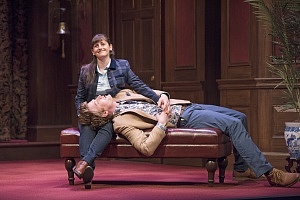
Jennifer Dzialoszynski (Vivie Warren) and Wade Bogert-O’Brien (Frank Gardner) Photos by Emily Cooper.
We were greeted by Dianne (SM) who assured us in a brief chat that the show was in great shape! As we waited for Eda to arrive (we were early), we got to listen to cast members sharing stories about personal objects they had lost to the Shaw theatre’s prop and costume collection. The actors do not purposefully donate their possessions; rather the clean-up crew is extra-meticulous, leaving no belonging behind. Inherently, these items become a part of the collection owned by Shaw. The list ranged from scarves and shoes to reading glasses.
Eda arrived and began the rehearsal by asking the actors to focus on talking to each other during this read. It was a simple idea, but this rehearsal ended up being one of the most giving we have gotten to see, and very different from the table reading we saw at the beginning of the process. All of the hard work put in by the actors has paid off. Each actor brought tremendous amount of life to the story, making it feel like we were sitting in on a very compelling conversation at an awkward and uncomfortable family Thanksgiving dinner.
Eda intervened very little throughout the process, allowing the actors to really play through each act. They seemed like they were enjoying themselves, taking the appropriate moments to have fun and joke around with each other. With no interruptions and dedication to the honesty of the text, the actors were captivating. Some new details included were Wade (Frank) miming pointing a rifle at Thom (George) and making a cocking sound with his mouth; at another point, Gray (Praed) and Jen (Vivie) mimed smoking marijuana.
Because the actors were stuck sitting in a small space together, they had to work hard to land their lines. On stage the actors have much more freedom to manoeuvre around the stage area, but in this instance the actors had to deliver their points across a table, creating a really interesting dynamic. It was not all fun and games, as Dianne needed to prompt lines variously and Eda allowed for some discussion about direction, following the group’s read. She had only taken a few notes during the rehearsal, and voiced them to the group so that they could continue to move forward in their work on the text.
After the line run, we were given the opportunity to sit down with Eda and ask her some questions to bring this embedding process to a close. We started by asking Eda if she was satisfied with the production. She said that at this point she couldn’t answer that since it hasn’t gone up yet. So we rephrased, asking she was satisfied with where the production was at that moment – and she said she was. We wanted to know what Eda thought was the most beneficial about this embedding process from the company’s perspective. Had we affected their work? She told us that it was reassuring for the group in the rehearsal process to have a younger generation there to react to the content. The actors enjoyed having us there — it was nice for them to have extra eyes there to fuel their work in rehearsals. It allowed them to have a sense of what it will be like performing to an audience. It is nice to know that we were a positive and beneficial presence to the group and not just parasitic. Our next question was what she wanted us to get out of this experience if we are going to continue to work as theatre critics. She said that she wants us to understand that directors do think about all of their options when staging, and to consider the process of theatre-making. She wants us to be engaged with the production; to not just think about what could have been and to see what is. Our final question was about what will be key for her in bringing the rehearsal process of the show to an end. She mentioned two main points: putting the tech elements together with the acting, and taking over the space. The actors now are challenged to have fun with the show and play — to be like children at a playground and be fully immersed in the activity.
We ended our interview there and thanked Eda for allowing us to be a part of this process with her and the whole team. As we left the Festival Rehearsal hall for the last time, we talked about how excited we are to see this show in its entirety. Following the experience of sitting in on a process involving such a great group of people working on an amazingly-written and still-relevant show, finally getting to see the finished product will be the cherry on top.
April 19, 2016
Hannah Anderson, Sydney Francolini, Chantal Hatton, and Emily Lawther write:
March 23: Inching our way closer to the end of this embedding process, we joined the cast and crew of Mrs. Warren’s Profession for one of their last rehearsals in the rehearsal space, before they move into the Royal George Theatre, fondly referred to as the ‘George’ by company members. Eda had asked us to arrive an hour after the session started so that she could initially rework the final scene with Jen (who plays Vivie) alone. The way Eda is interpreting the ending of the production provides a spin commenting on the male dominance of society at the turn of the 20th century at which time the play is set.
The company proceeded to play that final scene when we joined the rehearsal. It is filled with tension that will, we believe, engulf the intimate space of the George. We were fortunate enough to see it run a couple of times as the cast and Eda worked out a few kinks. As Vivie literally tore away a chapter of her past, with Suzanne (ASM) replacing said prop each time she did so, the notion was clear: Vivie understands her place in society’s existing systems, but is going to engage with them on her own terms.
A break was called as set pieces were placed for the beginning of the show. The men then came onstage and character George Crofts (Thom Marriott) welcomed the audience to this production of Mrs. Warren’s Profession with a prologue. This places the action in the New Lyric Club and gives a brief history of censorship at the time, as well as some background about the play’s first production. It firmly addresses the audience as members, and guests of members, of the club. During one of the runs of this act, Shawn Wright (who plays Rev. Gardner) accidentally stole Wade Bogart-O’Brien’s (who plays Frank) line, but it was so honest and funny that Eda decided to keep it. Shawn apologized to Wade, and Wade was quick to forgive. In all our encounters with the show this was the only time in which we saw a line reattributed from one character to another.
The rest of rehearsal was used effectively by Eda and the company to iron out any uncertainties. After timing the duration of the prologue, Eda decided to skip to different scenes that needed more attention. In previous rehearsals we were present for, the play would always progress in its chronological order and, because of scheduling, we had mostly seen Act 3 so were eager to see something new. This time we finally got to see Nicole Underhay as Mrs. Warren and, though we only had a small glance at her work, she did not disappoint! Unfortunately our session soon came to an end.
Throughout this rehearsal the actors proved to be enjoying their work and were embracing moments of fun with each other. Nicole and Jen played around in their new heels, even cooing like birds for a brief moment, and funny man Shawn never missed a beat. It made us look forward to what we were going to see on stage in the final production.
April 2: We arrived eager to see the actors finally performing at the Royal George. We had enjoyed watching the previous rehearsals in the main Shaw rehearsal building, but we could not wait to finally see the set!
We entered the theatre through the side door and made our way down the stairs to basement of the theatre. We were all a little confused as to how to get into the actual theatre space from there, but luckily Wade was able to show us. We made our way through the bar, up the spiral staircase and finally entered the auditorium.
Our mouths gaped open at the sight of Patrick Clark’s set. It is absolutely stunning — the walls, bookshelf and set pieces (couch, tables, record player), all look as if they are part of the theatre. The two worlds are combined — the New Lyric Club and the Royal George. The actors looked just as entranced as we were as they took their seats; it was their first time rehearsing in the theatre as well.
The technical director of the Shaw Festival made his way to the stage to give the actors and crew emergency information in case there is ever a fire or blackout during a show. The actors were then encouraged to become familiar with their new setting. They walked in and out of every door, their hands gliding along the walls and set pieces as they went.
Once they were comfortable in the space, the rehearsals began from the top of Act 1. The men came out on stage as they had in the previous rehearsal and Thom began to recite the prologue. We could tell that the adjustment to the new space was having an effect on the actors, causing them to sometimes forget their lines, but Dianne (Stage Manager) was quick to help when one or another of them called a simple “yes please.”
As the rehearsal went on, Eda would stop every now and then to join the actors onstage to give notes, fixing blocking where she saw necessary. When she came back to the house and the play resumed, she moved around the space to see if there were any sightline or sound issues. She even asked a couple of the embedders to watch from the balcony to see if we noticed anything – happily there were no concerns to report.
As we viewed the show from above, a scene with Nicole (Mrs. Warren) played out before us. We could tell from this why she had been chosen for the role – she brought this self-respecting, powerful, charming character to life.
The rehearsal came to an end; unfortunately we were not able to see the whole show. This was the last rehearsal for most of the embedders, and we all left excited to eventually see the finished product of Mrs. Warren’s Profession when previews begin on April 23.
March 29, 2016
Hannah Anderson, Maria Evers, Sydney Francolini, Michael Fusillo, Chantal Hatton, and Emily Lawther write: We spotted the first signs of spring as we made our way again to Niagara-on-the-Lake on a beautiful afternoon in March. This was a welcome change from snow and wind, and made it all the more exciting to be at the Shaw Festival to observe another rehearsal of Mrs. Warren’s Profession.
As we entered the rehearsal hall and took our seats, the director, Eda and the others present welcomed us. At the beginning of our visit, Wade Bogert O’Brien and Shawn Wright (who play Frank Gardner and Reverend Samuel Gardner) were revisiting the beginning of Act 3; Jennifer Dzialoszynski and Gray Powell (Vivie Warren and Praed) would be arriving shortly to begin rehearsing Act 4.
Eda spoke with Wade and Shawn about the importance of the particular scene they were working on: it is the start of the show after intermission and therefore it is crucial to regain the audience’s attention quickly. As they began their work, it became clear how much had been accomplished in the week since we’d last observed this act. During the opening scene of Act 3, Frank and Reverend Gardner discuss the events of the previous night (between Acts 3 and 4), and it becomes clear the Reverend remembers very little due to the amount of alcohol he consumed. In this rehearsal’s passes through the scene, Eda stopped the actors less frequently to discuss the intention of the characters than we’d observed before. They seemed to be nearly off book and had a good understanding of their characters’ objectives.
Given their familiarity with the characters and material, Wade and Shawn began to play onstage with one another and made new discoveries in the scene’s comedy (during one run Shawn brought on a coffee filter in place of an icepack to aid the Reverend’s hangover) as well as discoveries in the relationship of father and son. In one pass Eda pointed out that Frank’s revelations of the amount his father drank the night before is like a game, where Frank is the torturer and Reverend Samuels the victim. This direction brought an interesting change to the father/son dynamic.
As actors memorize their text, it is easy to miss or add a word—even skip a line. But Eda and Diane (the stage manager) were always quick to ensure that these small mistakes were corrected, preventing the actors from forming habits of misspeaking the text. There is not much room for error when performing Shaw, as every word and comma are specifically placed, making it all the more important that the actors stick to the text as written. However, this does not mean that Eda is pigeonholing her actors into keeping things exactly the same — she sometimes starts a sentence with “I know Shaw said [blank] BUT…” and everyone laughs.
As Diane called for a break we left the rehearsal hall and headed to grab some snacks. One of the most exciting things about these breaks is that we are able to go down to the Green Room (a cafeteria) and while there recognize many of the people around us as company members from shows we enjoyed in previous seasons. One of the actors we encountered was Harveen Sandhu who we remembered as Eliza Doolittle, in last season’s production of Pygmalion. Although we did not speak with Harveen, a collective smile and admiring nod were given. Having the opportunity to interact with professionals we recognize and admire has been one of the most memorable and fulfilling parts of this process.
After the break, Jennifer and Gray arrived as Diane and Susanne (the assistant stage manager) set the rehearsal hall for the beginning of Act 4. This act takes place in the chambers of Honoria Fraser, a colleague of Vivie’s, on Chancery Lane, a well-known area in London where solicitors work. In the fiction of the play, between Acts 3 and 4, Vivie takes a position working at this firm. To represent this scene change in the setting of the Lyric Club, a large desk is brought forward from upstage and organized chaos was created on top of it. Large books, file folders filled with papers, and large scrolls helped set the stage for Act 4.
This act is far more serious when contrasted to the comedy in Act 3, as this is the moment in which Vivie reveals her mother’s profession to Praed and Frank. Before this information is revealed, Eda asked how much Praed knew about Mrs. Warren. Jennifer was perplexed as to why Vivie would have invited him to her place of work if she believed he knew about her mother’s past (and present) all along and kept it from her. Eda and Jennifer discussed the reasons Vivie may have chosen to keep him in her life, and it was decided that it might have been because of Praed’s good nature and kindness to Vivie that she remained in contact with him after she’d disowned her mother.
This discussion of Vivie’s life and inner struggle were then placed on hold as Diane called time for that rehearsal. Eda and the actors decided to pick up the discussion where they had left off on Monday morning, and we left the Shaw Festival, eager to return soon to the world of Mrs. Warren’s Profession.
March 18, 2016
Hannah Anderson, Maria Evers, Sydney Francolini, Michael Fusillo, Chantal Hatton, and Emily Lawther write: We six embedders drove the now-familiar route to the Shaw Festival Theatre to observe a rehearsal of Mrs. Warren’s Profession. This would be the second rehearsal we observed; we arrived just as the cast and production team returned from their lunch break and began working on Act 3.
The rehearsal room was set up very differently than it had been at our last visit; instead of tables for the actors to sit around the space was filled with various set pieces, forming a mock-up of the stage. We were seated just off the downstage left corner of the set, which gave us a pretty good view of the action.
This rehearsal was very interesting for us because they were working on the exact same scene that we had observed at our last rehearsal, but this time we got to see it on its feet. It gave us great insight into the progress they had made in one week. Most of the actors were already partly off book (and the ASM, Susanne Lankin, was always quick to provide a line if they got lost), and they all seemed very comfortable experimenting with different blocking in each pass through the scene, to see what felt the most organic. They went over each block of the text (2-3 pages) three to five times, and Eda would often pause the scene in order to question actors about their intention or to point out a societal rule which the characters needed to follow (or break intentionally). Gray Powell’s character, Praed, is particularly well-mannered in this play, so it is very important for him to nail those formalities. It also wasn’t uncommon for Eda to get up on stage with the actors and demonstrate a potential action for them to try; she did this expertly, and managed to lead the actors without smothering them.
One notable addition that Eda is making to this production of Mrs. Warren’s Profession is how she treats stage directions. At the top of Shaw’s script of Act 3 there is a paragraph or two which describes the stage and set dressings. Traditionally, of course, these stage directions would not be spoken by any of the characters; in this case, since the production is being set inside a men’s club and indoor furniture is standing in for a full outdoor set, Wade Bogert O’Brien (who plays Frank Gardner) begins the act by speaking this text, introducing the audience to each set piece. He informs them that the room divider is actually a hedge, and the small side table is actually a sundial, and so forth. It’s crucial to the audience’s understanding of what’s happening onstage, and also strengthens the production concept of the play’s setting (we are assuming, but haven’t seen in person yet, that this same convention of an actor speaking the directions happens at the top of each act).
The entire rehearsal was infused with a sense of play; the actors joked with one another constantly between passes, including poking fun at Wade as they restarted a block multiple times. As Thom Marriott (Sir George Crofts) patiently waited for his cue to enter, Eda joked, “sorry Thom, you’ll have to wait until Wade acts better.” “That’ll never happen,” Wade quipped, to which Thom replied “then I’ll choose a comfier chair.” They even made fun of themselves, as when Eda checked in with Shawn Wright (playing Reverend Samuel Gardner) to make sure that he was physically OK after several passes of a scene which required him to be on his knees, to which he replied that he “can’t feel anything from the waist down since 1988.” For the most part, this fun didn’t interfere with the work at all, but in the one moment when the actors started losing focus the Stage Manager, Diane Konkin, very efficiently pulled them back on track by simply stating the line from which they needed to begin again. The actors very quickly collected themselves and got back to work with a renewed energy.
There was also an excellent, unexpected comedy to be found within the scenes; Thom had us especially in hoots, particularly in his scene with Jennifer Dzialoszynski (as Vivie Warren). His presence and physicality was simultaneously hilarious and creepy and, although there is an enormous height difference between him and Jennifer, she effortlessly held her ground against him in a rather intimidating scene.
After the rehearsal was over we spoke to Susanne who informed us that they had been rehearsing full-time up to this point, and that what we had just seen completed their second run-through of the play. This was their last rehearsal on a full-time schedule, and moving forward they will be rehearsing part-time as Eda, Susanne, and three of the actors begin working simultaneously on A Woman of No Importance, and the three other actors begin working on Engaged – two other shows in this Shaw season. It will certainly be interesting to see the difference that this change from full-time to part-time rehearsal will make in the progression of the show when we return next time!
March 14, 2016
Hannah Anderson, Maria Evers, Sydney Francolini, Michael Fusillo, Chantal Hatton, and Emily Lawther write: On a crisp Saturday morning, we six embedders ventured to Niagara-on-the-Lake once again to sit in our first rehearsal of Mrs. Warren’s Profession at the Shaw. While signing in at the building we were buzzing, wondering what we would be watching based on what we had learned in our first meeting with the theatre’s associate director and the director of the show, Eda Holmes. Eda told us that her production focuses on the play’s history of censorship and on encouraging the audience to think about the social implications of prostitution for women. We were curious as to how Eda would be conducting the rehearsal: what was the relationship going to be between staying true to the original text and contemporizing it?
Once we were all signed in, we entered the rehearsal room which contained four tables connected in a square and six chairs set aside for us. Assistant stage manager (ASM) Susanne Lankin welcomed us and invited us to look at the costume designs pinned on one of the walls and the model of the stage and set. The sketches showed colourful designs of the costumes for the different characters, a mix of contemporary pieces and historical embellishments. The costumes were designed to allow the actors to move comfortably while indicating to the audience that they exist in a different time. As we settled in our seats the cast arrived and began making themselves comfortable. The energy was lively and excited as we watched as the company set up their scripts and notebooks; there was a professional playful camaraderie between actors, director, stage manager, and ASM. Eda then introduced us as the embedding team to the actors and in turn each told us what role they will be playing.
Before opening their scripts, the cast and director went over prior table work, leading to a lively group discussion about characters’ backstories and how their actions from Act 1 affect them in Act 2. The actors spoke insightfully about unseen characters and gradually dove deeper into how these figures connected to or affected their own characterization. We witnessed a combination of Eda narrating to the actors her understanding of the given circumstances — the characters’ previous actions, environmental facts, and beliefs — and asking the actors’ impressions of these circumstances. Though the company was early in the table work, it seemed well-established that while Eda works with one actor on their character, the other actors follow along. It keeps the collaborative work method going, as they ask difficult and thorough questions about each character’s journey and how the specific societal context that Shaw dictates has an effect on that journey.
The cast then began working on the top of Act 3, opening with Wade Bogert-O’Brien (playing Frank Gardner) and Shawn Wright (Reverend Samuel Gardner), flipping from their own Canadian accents to RP British pronunciation with ease. A few pages in, Eda stopped the read-through and started asking questions about what the characters’ purposes are during the scene. She helped the actors to better understand what the text is saying about their characters and what their relationships are with other characters. Wade and Eda debated the placement of a single comma in one of his lines, recognizing how its position changes the delivery! It became a detailed analysis of the grammar of a difficult sentence; it was clear that they were trying to respect Shaw’s writing, understanding that punctuation is placed in the text for a specific reason for the character. It was impressive to see that the team wasn’t rushing the table work but were taking time — diving deep into the meaning of a line or someone’s justification; everyone was extremely present and actively participating in the conversation.
The conversation always came back to the idea of British society attempting to hold high moral ground while contradicting itself at the same time. The cast and Eda discovered that each character’s morals shift in the show depending on situation, place, and people present. The play reveals double standards and hypocrisy — for example the fact that Vivie (Jennifer Dzaloszynski) strongly disagrees with her mother Kitty Warren (Nicole Underhay)’s profession as a brothel owner, despite having lived her entire life on the money it has provided.
Deeper in the table work, the company further discussed Vivie’s level of knowledge of her mother’s profession which turned into a discussion about the stigmatizing of and legality around prostitution today. Eda pointed out that the characters of Reverend Samuel, Sir George Crofts (Thom Marriot), and Praed (Gray Powell) represent different possibilities for career and advancement in society available to men, but not women. Vivie lacks the privilege attributed to the male gender and thus she is forced to choose between either relying on a man, marrying a man, or alienating herself from her family in order to find success in the eyes of the society around her. The cast and director made connections to contemporary censorship and oppression, pointing out that high-profile feminists including Lena Dunham and Meryl Streep speak about how degrading sex work is, while sex workers say that they don’t feel degraded or oppressed. By not demonizing Mrs. Warren and her profession, Shaw challenges the audience to actively think about morality and immorality, and the implications of censorship led by blind ignorance.
When stage manager Diane Konkin called for a second break we embedders packed our bags and left the building with the same buzzing feeling we’d had when we came in that morning. We spoke excitedly about how we wished we could have stayed longer and wondered with eagerness how the play will look when it is staged and on its feet.
February 8, 2016
Hannah Anderson, Maria Evers, Sydney Francolini, Michael Fusillo, Chantal Hatton, and Emily Lawther write: Packed into two different cars, all six members of this embedding team made our way to the Shaw Festival on a very cold winter morning. While the half hour drive to Niagara-on-the-Lake can be beautiful, we were all a bit uncertain about what was in store for us. We were on our way to meet Eda Holmes, Associate Director of the Shaw Festival, to interview her about her upcoming production of Mrs. Warren’s Profession, written by the Festival’s namesake George Bernard Shaw. When we arrived we were welcomed warmly by Suzanne Merriam, the Shaw’s Senior Manager of Education and shown the rehearsal room where the Mrs. Warren’s company is going to work. She led us down the “Awkward Hall” (a long hall in the Festival building that makes it difficult to greet anyone at the other end from you; there’s a long walk to them in full view) and to the Green Room, the lovely cafeteria for those who work at the Shaw, where Eda was waiting for us.
Now, you might be wondering, “but what is an embedding team, anyway?”— an excellent question. We’re a group of Dramatic Arts students in the third year theatre praxis class at Brock University. Everyone in the class is given the task of following the rehearsal process of a theatre production – Mrs. Warren’s Profession in our case – and to document it. This is called embedded criticism. We are here to give you a glimpse of what goes on behind the closed doors of a theatre production.
Once we all sat down with Eda, she admitted that she had never done anything with embedders and we then confessed we had never done this before either, so we were all in the same page. She asked us what we wanted from this process and collectively we agreed we wanted what our readers were getting: a behind the scenes understanding of professional theatre. After our discussion of what was expected in terms of our role, she welcomed us to the world of Mrs. Warren.
Mrs. Warren’s Profession is a gripping and historically controversial play that tells the story of the ex-prostitute and brothel owner, Mrs. Kitty Warren. She and her daughter Vivie struggle to understand each other as independent women and as kin. Vivie is unaware of her mother’s profession for the first half of the play (assuming that her mother is a ridiculous and promiscuous woman). When Mrs. Warren reveals the past and present of her career to her daughter it changes their relationship forever.
Eda began the interview by telling us about this production’s rocky start. She was a late addition to the team, as the original director had to step back from the show and it was passed along to her. The opening was rescheduled, and then the original designer had to step back as well, so they needed to find a new designer. But despite this challenging beginning, she put together a very strong and compelling concept.
Eda explained that she had an interest in the show’s history of being censored. Back at the turn of the 20th century when Shaw wrote it, the play could not be performed in public and was therefore first presented in 1902 at the New Lyric Club, a private gentleman’s club in London, England (the play was not licensed for public presentation until 1925). Performed with just furniture and no backdrop, the centre of that production was therefore the conversation between the characters. The desire to establish a similar focus on the dialogue is what inspired Eda and Patrick Clarke, her designer, for the Shaw Festival production this year. Clarke’s set recreates the original New Lyric Club, and the Shaw Festival actors will play “actors” playing the characters in the show. By setting it in the gentleman’s club, without lavish costumes, the actors and the modern day audience will be encouraged to focus on what the characters are saying, and the play’s message.
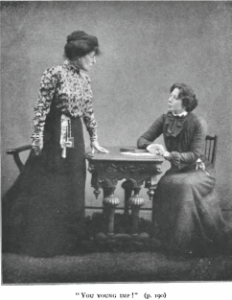
Fanny Brough (left) as the title character and Madge McIntosh as Vivie in the premiere 1902 Lyric Club reading
We had assumed from the promotional image on the Shaw’s website – which shows what looks like an escorts ad on a cellphone – that this version of the show was going to be updated and had planned our interview questions around that (but we all know what happens when you assume). Eda told us that in fact she wants to bring a contemporary feel to the show, without actually making it contemporary. She explained that the core of this story – prostitution and the social issues around it – is already so relevant that she didn’t want to muddy up the ideas in the show by setting the story in the present day.
Thus the production will suggest both then and now, for example through its approach to costuming. The idea Eda is working with is that the actors will wear contemporary clothes with a silhouette and style of the Edwardian period. This would allow for a character like Mrs. Warren, a woman who likes to lounge in a room and enjoy herself, to physically be able to lounge without costumes restricting her – but will still let the audience know that these characters are from a different time. An example of a potential costume for Mrs. Warren was a high-end lightweight blouse with a bow at the neck. While this is something you might see someone wearing today, this shirt at the same time has an Edwardian feel.
Then it was our turn to lead the discussion. Though we had to scramble a bit to reword our questions, we managed to have a very in-depth talk about Eda’s goals for the production, and the play’s themes. We asked what demographic she was hoping the show would reach. She explained that it was our own generation (we’re in our 20s) that she hopes will take the most away from this production. She wants questions like “who has the right to sell their body?”, “who has the right to judge?” and “who has the right to repress this?” to ignite a conversation among today’s youth. The play directly deals with questions about prostitution and rights through the characters of Mrs. Warren and Vivie. It’s intriguing to consider that these issues which women faced in the 18th and 19th centuries are still an ongoing conversation today. Eda asked us to stay in contact with her throughout the embedding process because we represent the target audience and she wants to learn from us as well. After rehearsal and any time between our visits, she invited us to ask questions and start any discussion to help her make this show as relevant as possible. It was thrilling to have such a hard working and talented woman ask us to become almost like confidantes.
One of our favourite answers – that initially surprised us, but resulted with a chorus of nodding heads — was when we asked whether the core of the show was going to be the mother/daughter relationship, or Mrs. Warren and Vivie’s opposing views. Eda explained to us that at its core, this play is the story of a breakup; it is about how the relationship between Vivie and Mrs. Warren falls apart because of the colliding opinions that they can’t and won’t fix. This led to us talking about how, approaching this play on the surface today, it’s easy to side with Mrs. Warren and accuse Vivie of being harsh and cold. But after we all read and thought about the play, we agreed that it stages a complicated confrontation between two strong and independent women.
Eda made the point that the history of Mrs. Warren’s Profession and its core story paradoxically contradict each other. Shaw’s play was censored to keep women from being exposed to ideas about prostitution and financial independence; while at the same time the play is exactly a staging of two independent and strong-minded women discussing their place in “civilized” Edwardian society. While women were eventually allowed to attend the first performances of the play, it was held at a gentlemen’s club—a place almost entirely for men.
Perhaps the most important idea that came up in our interview was the power of words in relation to this play. We discussed how we as a Western society don’t want to acknowledge prostitution as a job or career. We collectively can’t put the two ideas together. But here we have a play written by a man in 1894 put the word “profession” in the title. This is Mrs. Warren’s profession; she worked incredibly hard her whole life to get to the level of comfort she achieves—she worked to get her independence.
We ended our time with Eda viewing a model of the set. The stage at the Royal George Theatre will transform to seem as if the very gentlemen’s club came to the Shaw Festival, with comfortable leather chairs and that deep burgundy colour that almost screams “high class men smoke here.” Seeing the actual concept for the stage made us all vibrate with excitement. We were practically transported to the first production of Mrs. Warren’s Profession in 1902.
Our interview with Eda Holmes was the perfect way for us to start this embedding process. The excitement we all shared when leaving the Festival was energizing. We could all agree wholeheartedly that we could not wait to get into the rehearsal hall and watch this play challenge a generation ready for change.
Related Posts
Frances Johnson graduated from the Department of Dramatic Arts in 2020 and was about to begin an internship at the Shaw Festival when the Covid-19 pandemic...
It’s been a few weeks since the final performance of Brock University Department of Dramatic Arts’ Fall Mainstage, Scenes from an Execution. Closing off their...
Frances Johnson graduated from the Department of Dramatic Arts in 2020 and was about to begin an internship at the Shaw Festival when the Covid-19 pandemic...
It’s been a few weeks since the final performance of Brock University Department of Dramatic Arts’ Fall Mainstage, Scenes from an Execution. Closing off their...
One Comment
Leave a Reply (Cancel Reply)
Twitter Feed
Blogroll
DARTcritics.com is partially funded by the Marilyn I. Walker School of Fine and Performing Arts, in support of student learning; experiential education; student professionalization; public engagement with the teaching, learning and production activities of the Department of Dramatic Arts; new ways of thinking; and the nurturing of links with our communities.



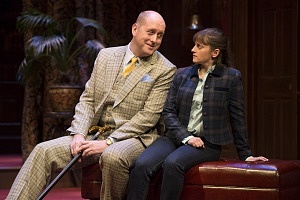
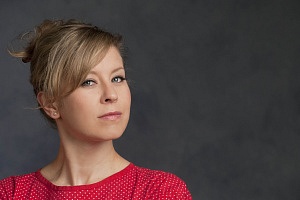
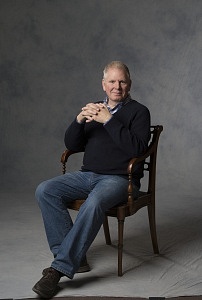
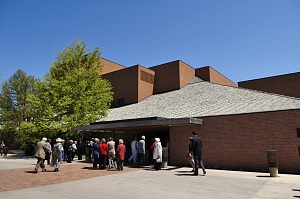


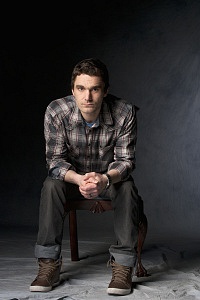

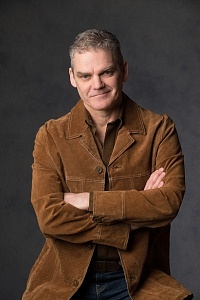





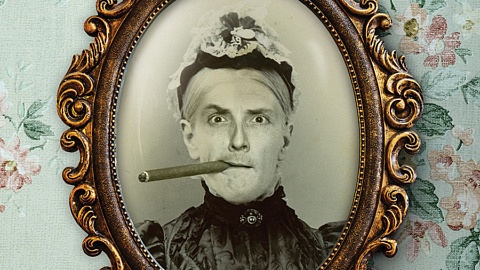


Pingback: May 12, 2016 – Shaw and Tell